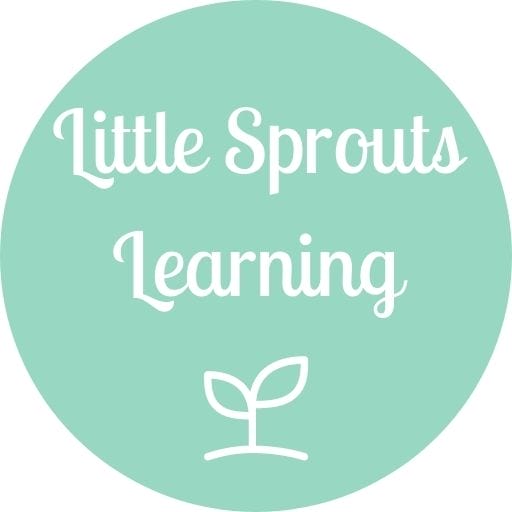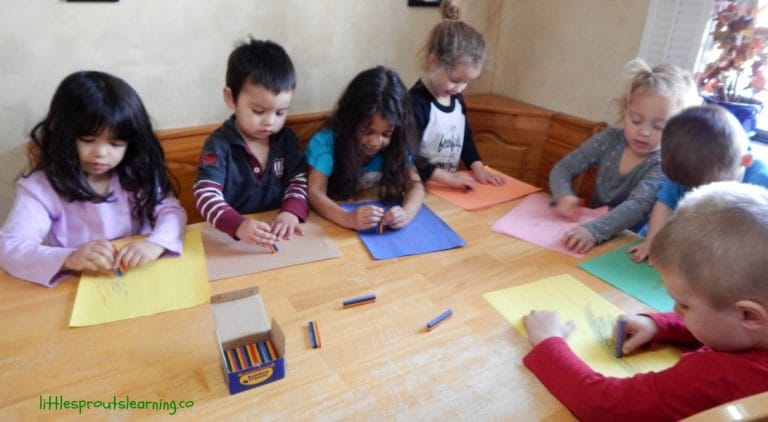How to Make Corn Husk Dolls with Preschoolers
This page may contain affiliate links. Learn More.
Learning how to make corn husk dolls with preschoolers is a fun and engaging activity that blends creativity, fine motor skill development, and a touch of history and Native American culture.

What Are Corn Husk Dolls?
These simple little figures made from dried corn husks have been a part of Native American traditions and early settler life for centuries.
Why Make Corn Husk Dolls with Preschoolers?
They’re made with natural materials, don’t require complex tools, and offer a great hands-on learning experience for young children. Best of all, preschoolers can enjoy making their very own dolls while exploring textures, shapes, and the satisfaction of creating something with their own two hands.
Before beginning the activity, it’s helpful to gather all the necessary materials and set up a child-friendly workspace. Thirty years of running a home daycare has taught me to always be prepared.

Materials You’ll Need
You’ll need dried corn husks, which can usually be found in the international foods aisle at the grocery store or leftover from fresh corn in the summer. You can even harvest, clean, and dry your own. They will need to be soaked in warm water for about 10 to 15 minutes to make them soft and pliable. Other materials include string, twine, or yarn, and scissors. You can also use bits of fabric if you want to decorate the dolls further.
Step-by-Step Instructions to Make a Corn Husk Doll
Start by showing the children the materials and letting them feel the softened husks. Talk to them about where corn comes from and how people used to use every part of the corn plant. This is a great time to include a little storytelling or a short history lesson at a level that makes sense for preschoolers.
For example, you can say, “A long time ago, children didn’t have stores to buy toys from. They used what they had around them to make fun things to play with, like dolls made from corn husks!”
Once the husks are ready, it’s time to build the doll. You can demonstrate first while the children watch, then walk them through the steps one by one. Start by taking three or four corn husks and stacking them on top of each other, making sure the ends line up. Fold the husks in half to form the shape of a head at the folded top. Tie a piece of string about an inch down from the fold to make the head and neck of the doll. This part may need adult assistance, especially with tying knots, but it’s a great opportunity for kids to practice helping or holding things in place.

Next, carefully separate the husk below the neck into two parts and gently pull them outward to form the arms. You can slide a tightly rolled piece of husk or a small stick between the separated parts to help create the arms. Then tie off the ends of each arm with a little bit of string to make hands. If you’d rather have simpler arms, another option is to twist or braid a separate small husk to form a straight piece for arms and tie it horizontally between the husks at shoulder level.

For the body, smooth the rest of the husks downward to cover the “torso” area. Wrap another piece of string just below where the arms attach to form a waist. From here, you can either leave the bottom part of the husks hanging like a skirt or split them into two sections and tie the ends to make legs.
Preschoolers often enjoy making different styles, and letting them choose if they want their doll to wear a “dress” or “pants” is a fun way to involve them creatively. Encourage their choices and praise their problem-solving.

Ways to Customize Your Corn Husk Dolls
Once the basic doll is complete, the children can begin personalizing them. For traditional practices, corn husk dolls were left faceless, which is another opportunity to talk about the history and stories behind these crafts. An elder taught us you never make a face on a corn husk doll. It’s not done.
You can also provide small scraps of fabric, bits of yarn for hair, or tiny paper accessories like hats or capes to encourage imaginative play. Give each child a little basket or bin of decorating supplies so they can explore textures and try different things. Keep things simple.

This kind of project is about the process more than the result. Some dolls may be lopsided, and some ties may come loose, but all of that is part of the learning experience. Celebrate every child’s creation and encourage them to tell stories about their doll. Ask questions like, “What’s your doll’s name?” or “Where does your doll live?” This helps build language skills and encourages them to think creatively.

Safety Considerations for Young Crafters
Safety is always important with young children, so keep scissors out of reach unless you’re helping them cut, and supervise closely when working with string. For younger preschoolers or toddlers, you might want to prepare the tied sections ahead of time and let them help with decorating and pretend play. Even if they can’t do the tying themselves, they’ll still love the tactile feel of the husks and the fun of making their own toy.
Corn husk dolls aren’t just a craft, they’re a bridge to the past, a sensory learning experience, and a way for preschoolers to develop their fine motor skills, creativity, and storytelling abilities all at once. Plus, they’re a low-cost, eco-friendly activity that uses simple materials and offers a big reward: a treasured handmade doll that a child created all on their own.
Whether you do this as part of a fall lesson, a cultural study, or just a fun rainy-day project, making corn husk dolls is sure to be a hit in your preschool classroom or daycare.
More Traditional Craft Projects for Preschoolers
For more ideas on traditional crafts, check these out:
- How to Make Natural Dyes for Fabric from Plants is another Native American practice that we can still enjoy making today.
- Learning How to Make Drums from Giant African Drum Gourds is super fun, especially if you grow your own gourds and dry them.







